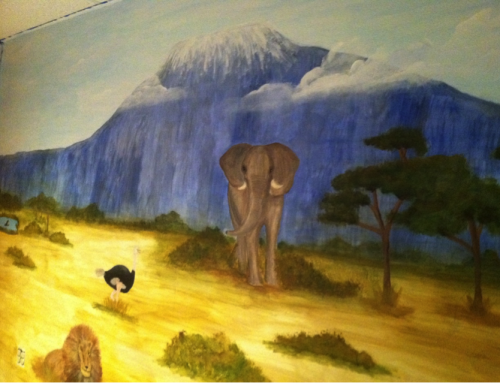 Esotropia caused by a brain tumor
Esotropia caused by a brain tumor
Dr. Steele’s patient came to Children’s Eye Physicians concerned about an in turning of his eye. He was also experiencing double vision when he played soccer. He was age 8, and his mom thought that the misalignment of her son’s eyes was due to a head injury that occurred while playing sports. Upon further evaluation and based upon the uncommon presentation of the patient’s esotropia, Dr. Steele ordered some testing that revealed that the patient’s esotropia was a result of a brain tumor, putting pressure on the nerves controlling the eye’s muscles. Fortunately, and with timely follow up, the patient’s brain tumor was removed (benign) and the patient’s gaze returned to normal as the nerves restored themselves.
What is Esotropia?
Esotropia is “in-turning” of one or both eyes. It may be occasional or constant and may occur with near fixation, distance fixation, or both. The crossing may occur predominantly with one eye or may alternate between eyes. Esotropia may occur at any age and is the opposite of exotropia (outward eye turn).
Is Esotropia ever “normal”?
Esotropia in infants less than 20 weeks old frequently resolves spontaneously, especially when the misalignment is intermittent and small in magnitude. However, constant eye crossing at ANY age should be evaluated promptly by a pediatric ophthalmologist. Eye crossing (constant or intermittent) beyond 4 months of age should be evaluated.
What are the different types of esotropia?
Esotropia can be classified by:
Age of onset: Congenital (at birth, or infancy) or Acquired (later in life)
Frequency: Intermittent vs. constant
Accommodative vs. Non-Accommodative: Treatable with glasses
Esotropia can also be secondary to other conditions
Various neurological conditions (hydrocephalus, brain tumor, etc.)
Medical conditions (thyroid disease, Duane syndrome, etc.).
What problems can esotropia cause?
The effect of esotropia on the visual system depends on the frequency/severity of eye crossing and age. Eye crossing affects the ability of the eyes to work together. Older children and adults with a new onset esotropia often experience diplopia (double vision) and or decreased binocular visual field. Children can lose stereopsis (3-D vision) and binocularity (simultaneous use of the eyes) in addition to loss of vision in the crossing eye (amblyopia).
Does Esotropia run in families?
Strabismus, or misalignment of the eyes, does run in families. However, affected family members do not necessarily share the same type and/or severity of strabismus. A family history of strabismus is a very good reason for an evaluation by a pediatric ophthalmologist.
Are there conditions that increase the risk of Esotropia?
Prematurity, a positive family history, and various neurological and genetic disorders increase the risk of eye misalignment. Also some systemic disorders cause ocular misalignment (hyperthyroidism, diabetes, etc.).
What are clues to watch for with these patients?
Is the onset of the eyes crossing new, or is this an ongoing concern since birth up to the age of 4?
Is the onset of the eyes crossing sudden?
Is the patient complaining of double vision?
Is the patient’s eye motility limited?
Is the esotropia commitant or is there a pattern?
Is the fusion, stereoacuity, or visual acuity affected?




